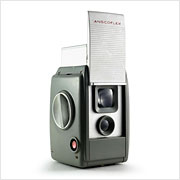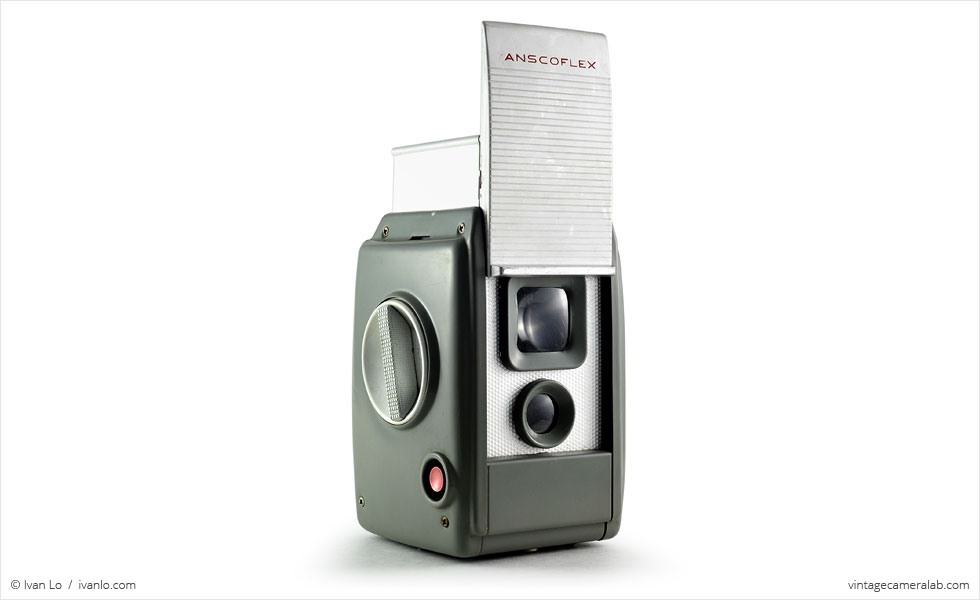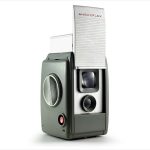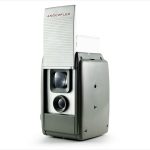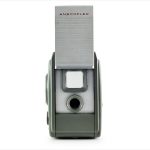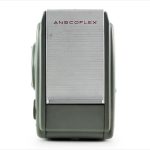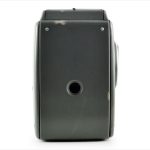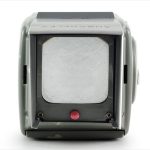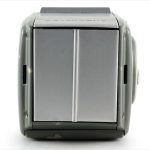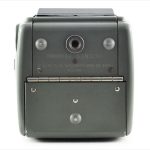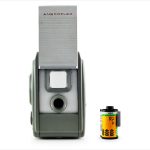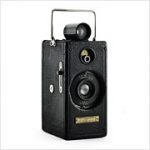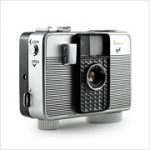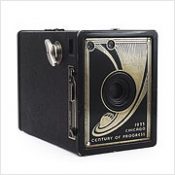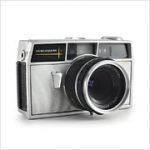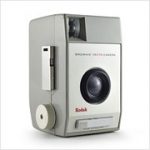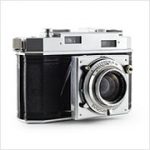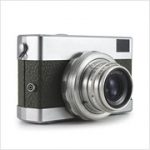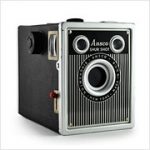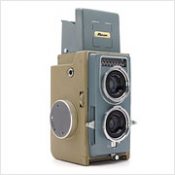Ansco Anscoflex Specifications
| Manufacturer: | Ansco |
| Origin: | USA |
| Made in: | Binghamton, NY, USA |
| Introduced: | 1954 |
| Type: | Box, Viewfinder |
| Format: | 620 Film |
| Dimensions: | 9.2 x 13.6 x 9.4 cm |
| 9.2 x 20.4 x 9.4 cm (viewfinder open) |
Ansco Anscoflex Overview
The Ansco Anscoflex is an unusual pseudo TLR camera introduced in 1954 by Ansco. The Anscoflex (and Anscoflex II) was crafted by the world-renowned French-American industrial designer Raymond Loewy, the same man whose portfolio includes the iconic Greyhound Scenicruiser bus, several steam locomotives for the Pennsylvania Railroad, various cars like the Studebaker Avanti, Sunbeam Alpine, and Hillman Minx, the interiors of the supersonic Concorde and NASA’s Skylab space station, as well as the livery for Air Force One. Small wonder he was referred to by the press as “The Father of Industrial Design.”
To ready the camera for picture-taking, the large metal panel on the front must be lifted to expose the lens. Raising the panel also opens the barn doors located on the top of the camera to reveal the waist-level viewfinder. The Anscoflex’s lens has a fixed aperture of f/11 and is mated to a simple rotary shutter locked in at 1/60 of a second. The large metal dial on the user’s right hand side has two functions: it advances the film when turned clockwise and cocks the shutter when rotated in the opposite direction. Once the shutter is cocked, the red metallic shutter button near the dial pops out to let you know that it’s ready to go.
A similar red button located on the top just behind the viewfinder opens the film door to allow the loading and unloading of 620 film. An external flash unit can connect to the camera via two holes on the user’s left hand side and a plastic neck strap (which is missing on mine) feeds into the two slots on the shoulders of the camera. A red window is located on the back and a standard 1/4 inch tripod socket can be found on the camera’s bottom.
As a pseudo TLR, the Anscoflex bears only a superficial resemblance to real twin lens reflex cameras like the Rolleicord IId and lacks an actual viewfinder lens, basically making it an overly elaborate box camera. That said, I really don’t care that it’s pretending to be something it’s not. I absolutely love the grey-green enamel coated metal exterior, the lens/viewfinder revealing mechanism, and the concave shutter button. In fact, the Anscoflex’s Art Deco styling and clever design make it one of my favorite cameras of all time.
Find your very own Ansco Anscoflex on eBay.
McKeown, James M. and Joan C. McKeown’s Price Guide to Antique and Classic Cameras, 2001-2002. (Grantsburg, WI, USA: Centennial Photo Service, 2001), p 49.
“Raymond Loewy,” Wikipedia, http://en.wikipedia.org/wiki/Raymond_Loewy
